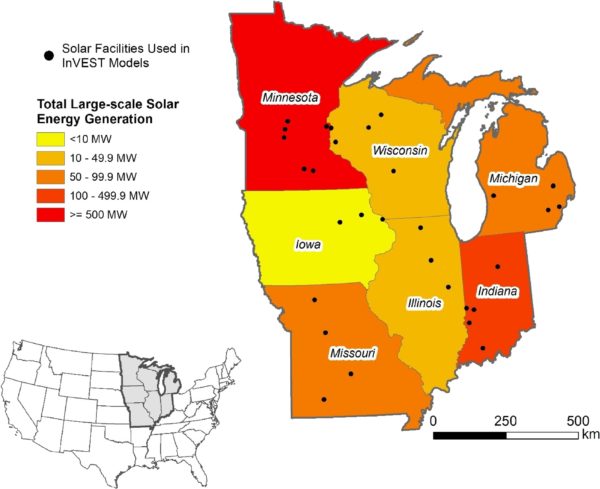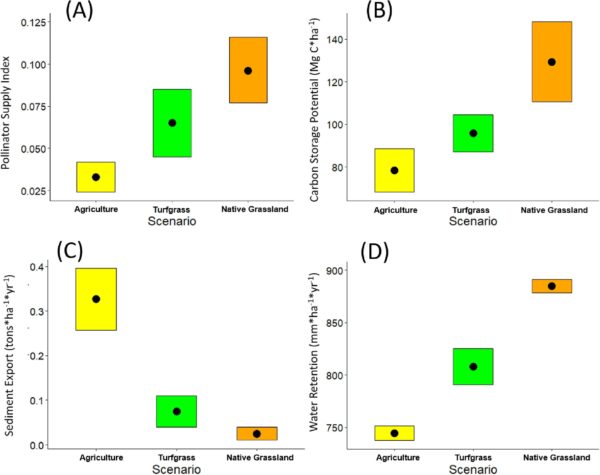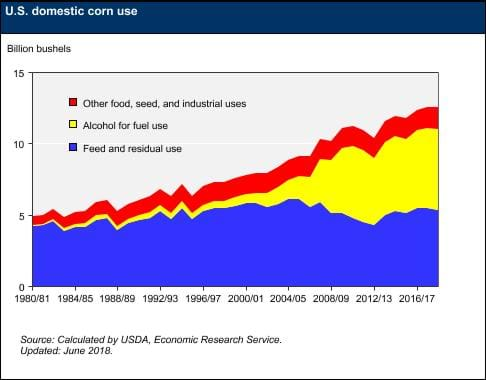As we humans scramble to address climate change with renewable energy, the real paydirt in solar might actually be dirt.
Think of it in terms of multiple scientific and economic interests converging on the soil just below your photovoltaic panels. The panels provide an opportunity to restore natural ecosystems and reduce soil erosion, all while reducing the electric power grid’s carbon footprint.
For example, Minnesota and Iowa used to be home to an estimated 25 million acres of tallgrass prairie. Due to agriculture, these ecologically diverse habitats are almost functionally extinct, as barely 1% of those tallgrass acres remain.

From an emissions-capturing standpoint, these native grassland habitats are important because they sequester almost 60% more carbon per acre than modern agricultural activities.
Seeking to understand the environmental effects solar power has on these properties, a collaboration between researchers from the U.S. Department of Energy’s Argonne National Laboratory, the National Renewable Energy Laboratory, and the University of Minnesota analyzed solar power facilities that integrate natural grasses.
The study modeled and averaged solar facilities in seven states in the Upper Midwest. Their modeling suggests that native grasses planted as part of 10 GW of solar generation capacity would sequester 129.3 tons of carbon per hectare; that is 65% and 35% greater than either an agriculture or a solar-turfgrass scenario, respectively.
The researchers said that this volume of emission sequestration is equivalent to the emission savings of 5,000 GWh of fossil generation shifting to solar power, which would correspond to greater than 3 GW of solar capacity.
 The paper found that in addition to carbon sequestration, native grassland habitats also produce a three-fold increase in habitat for local pollinators, like bees and butterflies, when compared to pure agricultural usage. The threat of erosion from poor management still looms for midwestern soil. Solar + native grasslands would protect this fertile asset from losses of up to 9,000 tons of sediment erosion annually, and would retain over 40,000,000 cubic meters of water from runoff annually.
The paper found that in addition to carbon sequestration, native grassland habitats also produce a three-fold increase in habitat for local pollinators, like bees and butterflies, when compared to pure agricultural usage. The threat of erosion from poor management still looms for midwestern soil. Solar + native grasslands would protect this fertile asset from losses of up to 9,000 tons of sediment erosion annually, and would retain over 40,000,000 cubic meters of water from runoff annually.
Prior observational research has shown that solar panels create microclimates in semi-arid regions by significantly increasing the water retention in soil, which in turn increases sheep and cow grazing grasses by 90%.
Land conscious
The solar industry already is conscious of land use challenges. Deals sometimes fall apart because people push back over issues related to land use. Their concerns include perceived home value depreciation, the losses of a rural lifestyle, and the risk of agricultural capacity depletion.
Two years ago, solar developer Silicon Ranch launched a “holistic solar land management program” known as Regenerative Energy. The group’s aspirations include:
- Sequestered carbon, biologically active soil, and improved soil formation and stabilization
- Improved air and water quality, and increased water quantity
- Increased biodiversity and enhanced overall ecosystem functions
- Established pollinator habitat and endangered species habitat.
Recently, a 2.4 GW portfolio of agrivoltaic projects changed hands, while a large developer put out a call for innovative agrivoltaic ideas, and solar interests in France started an agrivoltaic association.
We are going to build the solar. We already have the sites. The question is, how will it get built?
Solar vs corn?
And speaking of agriculture, did you know that all growth in corn use since 1980 went to make alcohol for fuel?
 Roughly 25% of the United States’ corn acreage is used specifically to generate biofuels, which represents only around 10% of all transportation fuel. Crops to create that amount of fuel is currently using somewhere between 14 and 20 million acres of land. If that same acreage were used for solar electricity generation, we would produce an eye-popping 1.8-2.5 TWdc. Some estimates are that the U.S. could reach 100% clean electricity with roughly 1.1 TW of wind and solar combined.
Roughly 25% of the United States’ corn acreage is used specifically to generate biofuels, which represents only around 10% of all transportation fuel. Crops to create that amount of fuel is currently using somewhere between 14 and 20 million acres of land. If that same acreage were used for solar electricity generation, we would produce an eye-popping 1.8-2.5 TWdc. Some estimates are that the U.S. could reach 100% clean electricity with roughly 1.1 TW of wind and solar combined.
And because an additional 25-40% of existing electricity generation would electrify 100% of our transportation sector, 2 TW of solar would generate roughly double what’s needed to fully electrify U.S. transportation.
That leads us to a startling conclusion. Solar fields are capable of producing roughly 16 times more transportation energy per acre than our current biofuel processes, while also providing a much needed opportunity to restore our native ecosystems.
This content is protected by copyright and may not be reused. If you want to cooperate with us and would like to reuse some of our content, please contact: editors@pv-magazine.com.









By submitting this form you agree to pv magazine using your data for the purposes of publishing your comment.
Your personal data will only be disclosed or otherwise transmitted to third parties for the purposes of spam filtering or if this is necessary for technical maintenance of the website. Any other transfer to third parties will not take place unless this is justified on the basis of applicable data protection regulations or if pv magazine is legally obliged to do so.
You may revoke this consent at any time with effect for the future, in which case your personal data will be deleted immediately. Otherwise, your data will be deleted if pv magazine has processed your request or the purpose of data storage is fulfilled.
Further information on data privacy can be found in our Data Protection Policy.